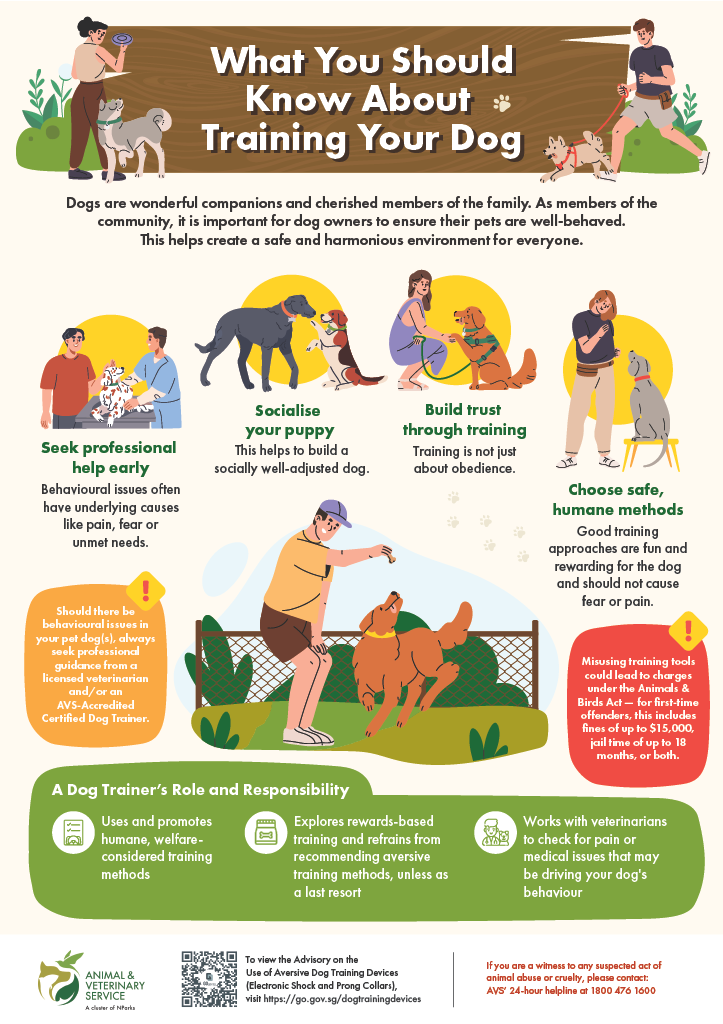Training and socialisation
Training your pet
Training helps to enhance the relationship between you and your pet. A trained pet is able to follow its owner’s instructions, and should be rewarded for its obedience. The training process helps to build and strengthen the bond between you and your pet. Training also helps you better understand your pet, resulting in greater respect of and appreciation for it.
Training your pet can be hard work, but it is well worth the effort. Here are some tips on how to train your pet:
- Conduct "play training", where tasks take the form of fun games and are driven by your pet's playful side.
- Be consistent in the visual and verbal cues you give, and keep the verbal cues short and simple.
- Have several short training sessions lasting 5 to 10 minutes each to build consistency, instead of a single long session.
- Start the training at a quiet place familiar to your pet, with minimal distractions.
If you have a pet dog, you may engage one of our accredited trainers for training. This training with an accredited trainer is compulsory if your dog’s breed is listed in the list of Scheduled dogs.
Which pets can be trained?
Almost all pets can be trained, but to different extents. In each case, patience and time are needed. Remember, pets cannot become fully trained overnight.
Dogs can be trained to do tricks, manoeuver obstacle courses, or even become working dogs. Working dogs include rescue dogs, guide dogs for the visually impaired, and hearing dogs.
Dogs, cats, and rabbits can also be toilet trained.

